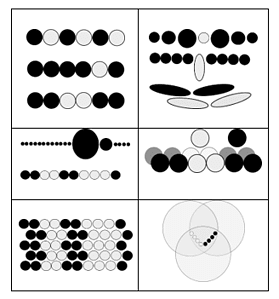It’s not happenstance that some pieces of jewelry draw your attention, while others do not. It’s the result of an artist fluent in design. That fluency begins with selecting design elements, but it comes to full fruition with the application of principles of composition, construction, and manipulation. This is where the artist flourishes, shows a recognition of shared understandings about good design, and makes a cluster of jewelry design choices, resulting in a piece that is seen as both finished and successful. These principles represent different organizing schemes the artist might resort to. Jewelry artists translate these principles a little differently than painters or sculptors, in that jewelry presents different demands and expectations on the artist. The better artist/designer achieves a level of disciplinary literacy–selecting design elements and applying principles–where fluency becomes automatic, accurate, and rapidly applied.
JEWELRY DESIGN PRINCIPLES
Welcome! AJF believes that essays, dissertations, and other writing about art jewelry deserve to be readily accessible, researched, and savored. Enjoy.

Title: JEWELRY DESIGN PRINCIPLES
Author(s): Warren Feld
Topic: design theory
Publication Year: 2018
Institution:
Discipline:
Relevant Country(s): United States
Material: